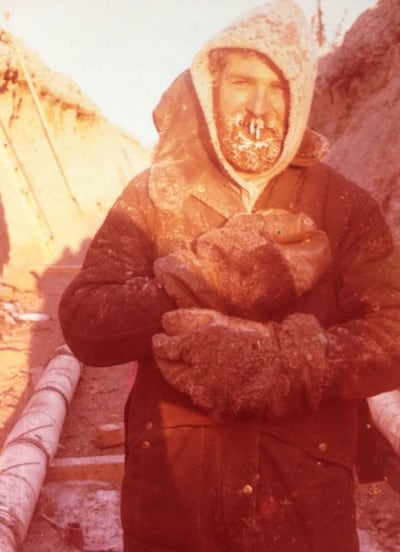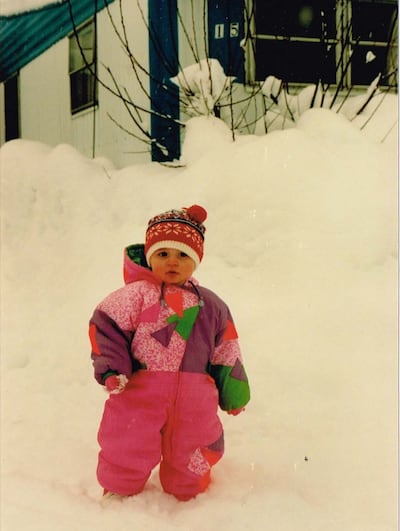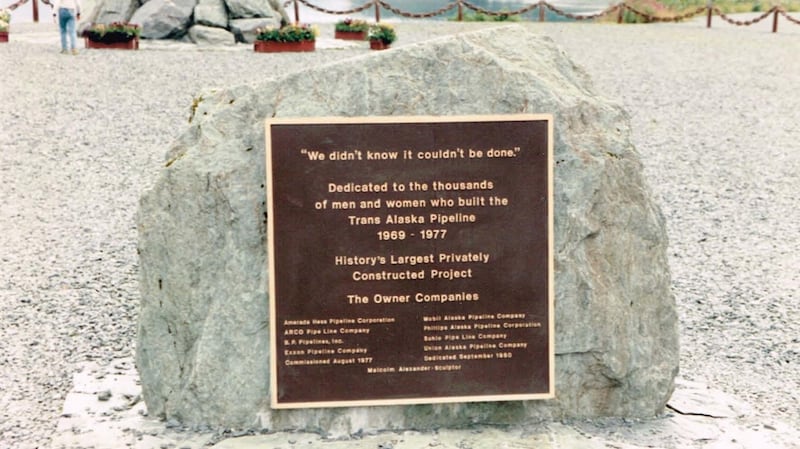"It's big, scary and far away. Wherever you are, it's far away," wrote Pete McCarthy about Alaska in The Road to McCarthy. With a distance spanning 6,600km between Alaska and Ireland, it certainly is far away, and with a hostile climate and perception as a "final frontier", it's an unusual choice of destination for a migrant, be they Irish or otherwise.
During the winter, temperatures can plummet to -50. In the years before Skype and Whatsapp, phone calls home were charged at $5 per minute. So what drew a group of Irish men and women to the state in the 1970s?

Fifty years ago this year, oil was first discovered at Prudhoe Bay, on the North Slope of Alaska. At the time it was the largest oil strike in North American history, an event that would have profound implications for a small but significant group of Irish people, my father included. Alaska may seem like the last place you would expect a carpenter from Tipperary to end up, yet it was not an uncommon choice of destination for Irish migrants at the time.
It was 1974 when my father decided to emigrate, to New York first for a year on advice from his older brother, before he moved on to Alaska. His move to New York was ill-timed, as the city was facing into a period of severe economic stagnation. Construction on public works came to an abrupt halt, practically overnight. He and a number of Irish co-workers quickly sought opportunities elsewhere.
Friends and old colleagues who had already made the move to Alaska sent word about lucrative employment opportunities. So despite the harsh climate and distant location, they decided to take their chances.

Gold rush
They were not the first group of Irish migrants to venture to Alaska. Since the end of the 19th century, there has been a consistent Irish presence in the 49th state. The Gold Rush of the late 1800s attracted a huge swell of migrants seeking their fortune, Irish men and women among them. In The Hard Road to Klondike, Michael McGowan writes of how there were “…hundreds of Irish men there - from every corner of the country from Cork to Donegal”, who had emigrated to Alaska and the bordering Klondike in search of gold.
During the 20th century, Irish workers found jobs at some of the state’s military bases, particularly during the Cold War era. In 1964, a tidal wave in the aftermath of an earthquake devastated the town of Valdez, and its reconstruction provided another source of employment for Irish migrant workers. A decade later, Valdez would be readying itself for the construction of the oil pipeline’s terminus, and for another influx of Irish migrants.

Initial elation at the discovery of oil at Prudhoe Bay quickly subsided as a number of practical problems emerged, including the potential for catastrophic damage to the environment, and issues with native land claims. Of greatest concern, to the oil companies at least, was the question of how 10 billion barrels of oil could be transported 800 miles from the North Slope, deep in the Arctic, to the ice-free port town of Valdez?
The timing of the discovery was fortuitous for the oil companies. The global oil crisis meant the process of settling native land claims and assuaging environmental concerns moved quickly. All that was left to solve was the question of transportation. The use of ice-breaking tankers or submarines was considered, as was the possibility of extending the Trans Alaska railroad. But after much deliberation, a pipeline was deemed to be the only feasible solution. Its design and construction was to be one of the greatest challenges in the history of modern engineering.
Construction of the Trans Alaska Pipeline System (TAPS) began in the spring of 1974, and continued up to 1977. The main contractor, Alyeska, employed approximately 25,000 workers each summer, while the subcontractors employed 25,000 more. Once completed, pipeline maintenance combined with revenue from the oil provided many more employment opportunities for Irish workers in the area throughout the 1980s. The economy in Ireland was flailing, which encouraged a significant number of Irish to stay in Alaska far longer than they had intended.
‘Lucky’ ones
My father started working on the pipeline in early 1975. By the middle of this year there was a significant surplus of labour available in Alaska. For many latecomers, expectations of a boom were shattered. For the “lucky” ones in employment, my father included, pipeline shifts were long and arduous. When I complain about work, he often reminds me of the 7/12 shifts he worked, seven days a week, 12 hours a day. Employees were supposed to work nine weeks on, two weeks off, but there was no obligation to take that break and most workers kept going for as long as they could physically handle it.
The majority of work on the pipeline was completed by May 1977, and oil began flowing in June that year. My father’s time on the pipeline had come to an end, and he spent some time travelling back and forth between New York and Ireland, where he met my mother, who was also from Tipperary.

But he was not finished with Alaska. The state began spending the revenue from the oil on public works projects, and my father was enticed to return to work on a major hydro-electric tunnel job, followed by smaller motorway maintenance projects.
My father’s migration journey was not only shaped by economic considerations, but also by his social networks, which is common for many migrants who move as members of a group of family or friends. His initial decision to migrate was based on advice from his older brother in New York, and the next step to Alaska was informed by the network of friends he had built up in the city.

It was through these social networks that a sense of an Irish community was created. Along with the other Irish who moved to Alaska during this time, he became part of a network that in turn supported and encouraged other Irish to move there.
But despite this strong sense of community my parents felt in Alaska, it proved to be too long a way to Tipperary for them, and they moved home in 1994, to be close to family and raise their own children here.

An estimated 300 Irish moved to Alaska in the 1970s. We hear about the migrants who go to London, New York or Sydney, and their stories are important, but so too are the stories of those who travelled in smaller numbers to less familiar destinations. When your father tells you that part of his orientation brief at work involved a warning that “you are not allowed to feed the bears”, you know he has a story worth hearing, and retelling.













